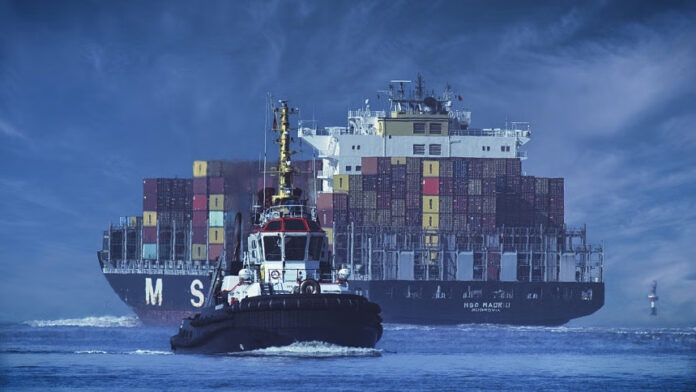The global shipping industry is facing unusual turbulence in recent weeks due to shifting trade announcements and fresh US tariffs, forcing companies to continuously adapt.
Experts have pointed out several recent trends, including half-empty cargo ships, inconsistent freight rates, and the potential rerouting of major shipping lines.
Since US President Donald Trump returned to office in January and launched a renewed tariff campaign, global trade has been on a rollercoaster. His latest move—a 90-day delay in certain tariff implementations, excluding those against China—has further unsettled the industry.
“In the three weeks before that announcement, there was a notable trade slowdown, with ships operating at just 50 percent capacity on transatlantic and transpacific routes to the US,” said Alexandre Charpentier, a transport expert at Roland Berger consultancy.
During that slowdown, sea freight rates dropped and many businesses paused their shipments as a precaution. “But last week, we saw the reverse,” Charpentier added. “Companies started rushing to ship to the US, clearing inventories and creating a surge in demand for cargo space.” Freight rates have since begun rising again.
Compounding the pressure are new US port charges targeting Chinese-built and operated vessels, set to take effect in mid-October. These are in addition to Trump’s imposition of tariffs as high as 145% on a wide range of Chinese goods—reaching a total levy of up to 245% on some products.
With China responsible for nearly 50% of global shipbuilding—ahead of South Korea and Japan—these moves have major implications for the industry.
Freight Rate Outlook
Looking ahead, many shipping companies anticipate a drop in freight rates, similar to what occurred during Trump’s first term (2018–2019). Back then, excess shipping capacity, lower rates, and rising operational costs led to decreased revenues.
“Tariffs in that period were less severe than what we’re seeing now,” noted Sandy Gosling, a logistics expert at McKinsey.
Charpentier said, “It’s hard to predict exactly what’s next, but a redirection of some trade flows toward Southeast Asia or India seems likely.”
Anne-Sophie Fribourg, VP of ocean procurement at UK freight forwarder Zencargo, suggested that the China-US route could become unprofitable. If that happens, she explained, “shipping lines will likely revise their schedules, shifting from traditional routes to emerging markets like Latin America, where demand has been climbing.”
So far, major players like MSC, CMA CGM, and Maersk have not altered their operations significantly.
Rerouting Trade
German container line Hapag-Lloyd reported no changes in Atlantic routes but observed a “sharp decline” in traffic from China, which has been offset by “increased demand from Southeast Asia.”
Boston Consulting Group echoed this trend in a note to clients, predicting a substantial fall in China-US trade and growing commerce within the “Global South.”
Meanwhile, the World Trade Organization (WTO) has cautioned that global goods trade could shrink by as much as 1.5% in 2025 depending on how Trump’s tariff strategy unfolds. Specifically, merchandise trade between China and the US could decline by up to 81%, it warned.
Gosling added that tariffs are just the latest in a series of supply chain disruptions over the past decades. “According to a 2020 McKinsey Global Institute report, industries have faced major disruptions lasting over a month roughly every 3.7 years.”
From the COVID-19 pandemic to Red Sea conflicts forcing vessels to reroute around the Cape of Good Hope, the shipping sector has learned to be nimble. “Shipping companies have developed a real agility in rerouting,” said Fribourg of Zencargo.
Still, Charpentier emphasized that redirecting trade flows to alternative destinations “will take time.”



